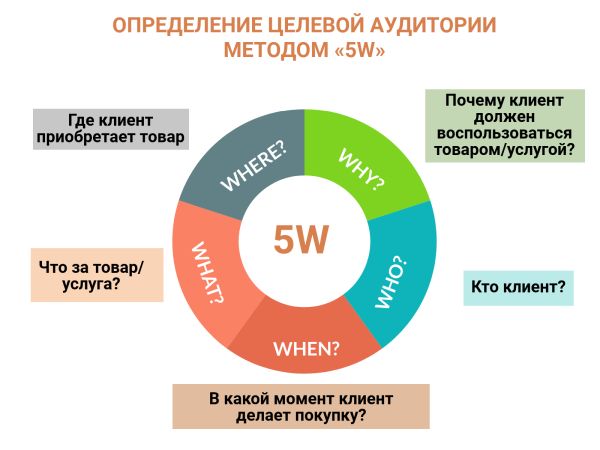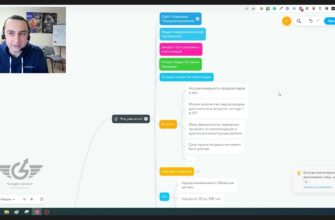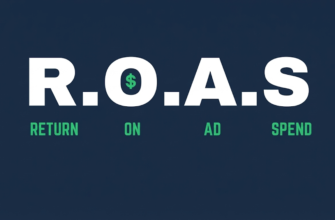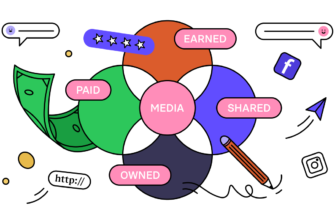- Defining the target audience portrait
- Why do you need a portrait of your target audience?
- How to correctly draw up a portrait of the target audience?
- Why does the audience need the product?
- Who exactly needs the product?
- Where to look for the target audience?
- What problems does the consumer have?
- Methods of creating a portrait of the target audience
- The Five Question (or 5W) Method
- Result-based method
- Method from product features
- Method of determining the CA from the market
- An example of a target audience portrait for a children’s store
The target audience consists of those who have already formed or expressed an interest in the product by planning or making a purchase, and those who are only interested in close topics and may in the long term add to the list of customers.
One of the basic concepts of marketing activity is the customer portrait. Without a clear understanding of the characteristics of the ideal potential customer, it is virtually impossible to create a serious marketing strategy. Thus it will not be possible to build a full-fledged relationship with the client or to conduct an effective marketing campaign.
But how to draw up a portrait of the target audience correctly? Let’s answer this question in this article.
How many calls and sales will I get by ordering contextual advertising from you?
I need to calculate the conversion of my website Describe
the task
in the application
Calculate potential ad revenue Google
contextual advertising calculator
Defining the target audience portrait
Target audience portrait is a set of characteristics of different segments of potential customers. To make a quality portrait, it is necessary to maximize the detail of the parameters of each group of consumers.

If you sell scooters and bicycles online, your customers may include parents of toddlers and teenagers, active and sporty people, fans of extreme mountain slopes, hiking and traveling, managers who get to the office on a bicycle or scooter.
Why do you need a portrait of your target audience?
The ideal client is the one who gets the maximum benefit from your business. It is under his interests that both the advertising campaign and the activity as a whole are customized.
Information! Misunderstanding the peculiarities of your audience can cause ineffective spending of advertising budget or even failure of the whole business.
There is no such thing as advertising that doesn’t work. Any visual information causes some kind of reaction – from “complete nonsense” to “must tell my husband” and “I want!”. And the number of options is endless.
But there is also a bad scenario, when advertising leaves the consumer indifferent or irritates him. The reason for the low effectiveness is that some of those to whom the advertising message is addressed do not associate themselves with the participants of the commercial or ad. They do not take such marketing information on their account, subconsciously filtering it out.
The number of such ineffective marketing contacts should be minimized, for which purpose a portrait of the target audience is needed. The more accurately and in more detail will be described the characteristics of the potential customer, the more targeted will be the hit.
Important! Those entrepreneurs who clearly present all the stages of decision-making by target customers have the clearest strategy for promoting their product.
How to correctly draw up a portrait of the target audience?
Parameters such as age and location are mandatory if you want to build a portrait of your target audience, but these characteristics alone will not be enough. Answers to the questions below will provide the most complete description of potential customer segments.
Why does the audience need the product?
The analysis starts with identifying the needs that the product satisfies. For example, the need to protect a smartphone from damage can be satisfied by buying a shockproof case.
It should be understood that the customer will come to the page of an online store not so much for the case, but for the peace of mind it provides by protecting his iPhone. That’s why the message “the case will provide reliable protection for the smartphone” will work better than “the case will decorate the iPhone”.
Who exactly needs the product?
In the example with covers, the direct CA of the product is the owners of an Apple smartphone. It is important not to miss the fact that such devices are most often used by those who have a high level of income.
Photographing and processing images is a common hobby among them. Armed with such conclusions, you can find interesting sites for targeting.
Where to look for the target audience?
For the most effective promotion of the product and website it is necessary to identify the space of vital interests of the target audience.
Potential buyers in the case study with covers most likely use social networks on a regular basis. Information resources and specialized forums also serve as a platform for communication of this segment of consumers.
Tip! It is necessary to analyze all options and choose the best one for marketing activities.
What problems does the consumer have?
The owner of an iPhone needs to protect the gadget from damage. The problem is that standard bumpers are not suitable for this purpose.
Warning! Do not confuse the concepts of “problem” and “need” – they are not equivalent.
A proper understanding of the problem allows you to create an advertising message that hits a specific target. By doing so, you will let them know that you share the potential customer’s problem and have an idea of how to get rid of it.
You should not forget about segmentation. It is important not to miss the opportunity to select a target audience, taking into account the goals of promotion. This will help to attract those who have not ordered your product before. Sometimes you can even win over loyal customers from competing stores – that’s why it’s so important to segment your target audience.
How many calls and sales will I get by ordering contextual advertising from you?
I need to calculate the conversion of my website Describe
the task
in the application
Calculate potential ad revenue Google
contextual advertising calculator
Methods of creating a portrait of the target audience
You can start segmentation after you have completed the stage of studying information about potential customers, when you have already created a portrait of the target audience. This will allow you to offer customers from different groups products with different characteristics that best suit their needs.
Segmentation is carried out in several ways. Let’s consider the main methods of drawing up a portrait of the target audience:
The Five Question (or 5W) Method

The 5W method by Mark Sherrington is based on five questions. The answers to them are recorded in a special table for clarity.
- “What?” – what kind of offer (a type of product) is coming to the customer?
- “Who?” – Who are the customers of the business?
- “Why?” – Why should I buy from you?
- “When?” – when (at what time) is the product demanded by customers?
- “Where?” – Where exactly is it convenient for the customer to purchase the product?
By getting the most detailed answers to the suggested questions, you will create a customer avatar and determine the best way to sell them your products.
Result-based method
The main guideline of this method is the end result. First of all, it is necessary to understand what benefit the buyer will get by closing the deal. Then it is possible to describe the path along which the person will achieve the desired result.
Then it is necessary to find out the needs that make them follow this route. The final step is to analyze the CA to determine the segment most likely to have these needs.
As a result, several target groups should be formed. Using this data, launch a test campaign aimed at individual segments and evaluate the correctness of the hypothesis.
Method from product features
If the product is distinguished from similar ones by any non-standard characteristics, you should base your search for the target audience on them. To determine the target audience, perform the following actions:
- Select several competitors’ products, evaluate them and compare them with your own;
- Organize a survey to identify the features and needs of existing customers;
- Conduct a brief analysis of your product: pros and cons, advertising opportunities and potential threats;
- Divide all customers into 3 subgroups: those already buying the product, potential buyers and those who will definitely not be interested in the product;
- Create a plan of marketing activities to attract the attention of the potential audience.
All that remains is to test your hypotheses and observe the reaction to the product.
Method of determining the CA from the market
The method is based on taking into account the current state of the market.
The plan of action is as follows:
- Analyze the market, search for public statistics or order a comprehensive report from a company specializing in this activity;
- Conduct a survey among current and potential customers;
- Study competitors: their TSS and product features;
- Drawing up a preliminary customer portrait;
- Hypothesis testing.
Important! Regardless of the chosen method of creating a CA portrait, do not forget about testing. No inferences can be called genuine until they are tested in practice.
An example of a target audience portrait for a children’s store
An example of a target audience portrait of a retail store for children’s products.
General level:
The core CA are women 35-45 years old (the broader segment is 25-55) with middle and low income, living in small communities and raising at least one child no older than seven years old.
They value consistency, practicality and expediency. Their choices are always rational and based on feedback and recommendations, as they lack the material ability to make impulsive purchases. The opinion of their close circle is crucial. Influenced by advertising.
Level of product category:
Visit the store no more than once a month and only when necessary: buying clothes for a child, replacing furniture in the nursery or giving a gift when there is a good reason. They do not like to waste time on long trips, so they choose stores “at home” and prefer to buy everything in one place.
They always keep track of promotions and discounts, compare prices in several outlets and read reviews before buying a particular product. Potential risk and uncertainty do not allow them to order online – the product must be seen, touched and tried on.
Products unsuitable for any reason are returned or exchanged immediately. The average check for buying toys is no more than 800 hryvnias, for buying clothes – 2,000 hryvnias, and for ordering large-sized goods – 3,000 hryvnias. Prefer stores with affordable prices, a good selection of goods of well-known brands and a cordial attitude of sellers.
Brand level:
They store in a particular store only because it is more convenient and are not really committed to the outlet. If prices or assortment cease to satisfy them, they will immediately go to a competitor.
They do not discuss the store with acquaintances. They think it is important that salespeople recognize them, remember their preferences and recommend the right products. This saves time when shopping.


















